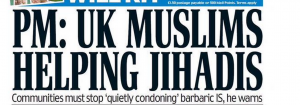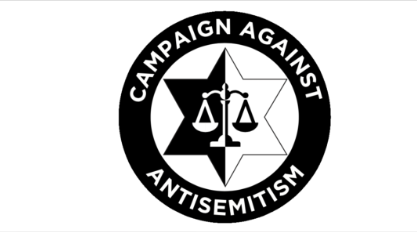As with previous reports, Tell MAMA has collaborated with researchers at Teesside to provide an analysis of data collected over the past year (ending Feb 2015) by the anti-Muslim hate monitoring group. The number of such cases has fallen back to 2012/13 levels, with last year’s spike almost certainly caused by reactions to the murder of Lee Rigby. There’s a full discussion of such spikes on pp. 13-16.
Broad patterns are similar to those reported in previous years – for example the disproportionate number of female victims of offline attacks, and the likelihood that perpetrators will be older, white and male.
There’s a potential difficulty in separating religiously motivated abuse from racism, an issue engaged with here
Revealingly, 44 cases reported that the victim was, at the time of the attack, wearing religiously distinctive clothing. This is something that, when taken alongside the small number of cases involving language characterised as ‘race hate’, may be taken to suggest that the attacks possessed a specifically anti-Muslim, rather than traditionally ‘racist’, character.
The report’s recommendations were pretty uncontroversial, but I did pause on this one:
Engage with the media to promote a more nuanced understanding of terrorist motivations, in order to reduce the impact of coverage relating to, or even fuelling, instances of ‘cumulative extremism’.
This is because certain sections of the media – and some politicians – seem to understate the intersection between terrorism and religion. However, yesterday’s Daily Mail headline was a reminder that the Teesside researchers do have a point
The Prime Minister’s speech may have been forthright – challenging even – but a less stark and startling headline would have been preferable, and would not have compromised the reporting of the story.
There’s an interesting discussion of the relationship between the media and hate crime on pp. 13-14 of the report. One finding from the data analysis was that the Sydney siege had little impact on anti-Muslim incidents. It is speculated that this may be partly because the perpetrator was identified as suffering from mental illness at an early stage, making the connection between his actions and Islam/Muslims less significant in the public’s perception. Accuracy is important – it’s clearly appropriate to draw attention to a factor which is both factually correct and likely to damp down anti-Muslim feeling. However failure to report on religion as a factor is both wrong (from a journalistic point of view) and counter-productive, as it stokes resentment. Being accurate is easier said than done – take the Fort Hood shootings case which ‘sits at the crossroads of crime, terrorism and mental distress’.
As Tell MAMA notes here, a distrust of the police may lead to an under-reporting of anti-Muslim crime. This problem is difficult to tackle, but one positive recent development is that the Association of Chief Police Officers (ACPO) has agreed to share data on anti-Muslim incidents with Tell MAMA. Another move which would help those countering anti-Muslim bigotry would be to ensure that all police forces report such incidents as a separate category of crime so that data can be collated and analysed. Theresa May recently promised that such a policy would indeed be implemented. As I’ve indicated, it’s sometimes hard to know how to balance countering anti-Muslim abuse with accurate reporting and (of course) necessary security measures. Supporting those who are simply working to tackle anti-Muslim incidents is a good way for the Government to send out a clear signal that is has no wish to alienate or target the UK’s Muslim communities.



